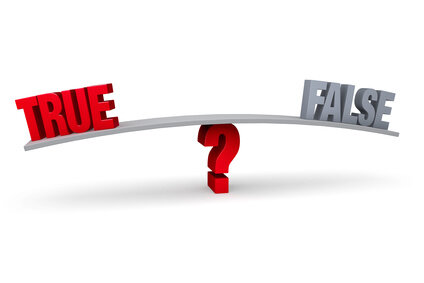11 September 2013

I used to wonder what this Javascript code fragment means:
var myElement = document.getElementById('id');
if (myElement)
{
// some statements here
}
Coming from a C# background, I thought that only boolean values or variables with a boolean type could be the argument for an if statement. After a bit of experimentation I found out that the block after the if statement will get executed if an element with that id is found. But I still didn’t understand why Javascript behaves that way.
I am not sure if ‘truthy’ and ‘falsy’ are real words in the dictionary, but they are very real in the Javascript world. As the name implies, truthy values evaluate to true, while falsy values evaluate to false. They do not necessarily have to be booleans in order to be evaluatable.
Here are the five falsy values:
falsenullundefined''0NaNAll other values are truthy, including the string ‘false’ and all objects.
In the above example, myElement will be null if an element with that id is not found, and it will be an object if it finds one. The above if works because null is a falsy value, while object is a truthy value.
So that’s what it was about! The next you encounter a weird Javascript if statement, remember truthy and falsy values. It might just save you a little time and/or hair-pulling session.